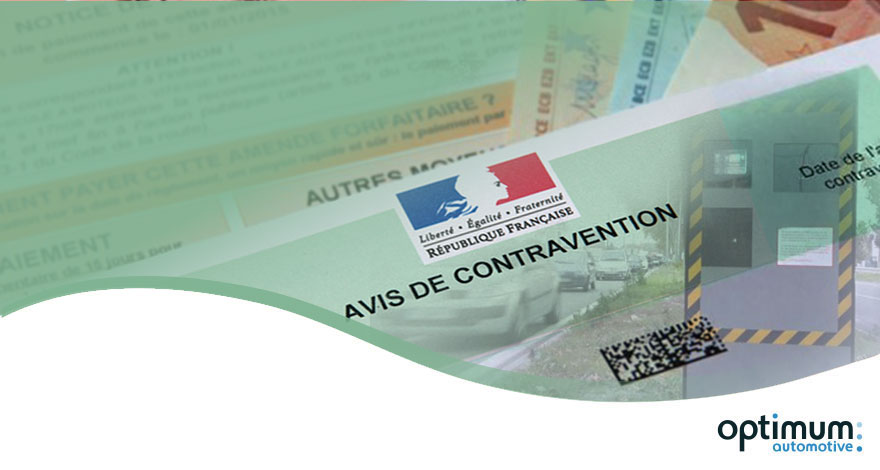As you will no doubt have noticed, the legislative context has changed since 1 January.er The new law will be applicable from 1 January 2017 for traffic offences committed with a vehicle registered in the name of a legal person.

Since the entry into force of this law, the head of the company is now obliged to inform the authorities of the identity of the driver who has committed a road traffic offence recorded in a report? on pain of suffering the consequences personally!
Even worse, the list of offences has been extended. This includes the following offences, which can be detected by or from an automatic control device: not wearing a seatbelt, using a telephone while driving, using a reserved lane or emergency lane, failing to keep a safe distance, driving over solid lines, failing to observe road signs and finally, the most common offence: speeding.
This endless (and evolving) list, coupled with the obligation to denounce, considerably increases the risks for company managers. Faced with this situation, what can be done to make drivers more responsible, to meet legal obligations and to preserve the liability of the company director?

The connected vehicle: the answer to limit infringements and automate processing
From their infancy in the early 2000s, on-board telematics units have made enormous progress and now offer a variety of efficient services (geolocation, mission management, driving analysis, car sharing/car pooling, etc.). One of these services is the automated management of fines. As a specialist in connected vehicles since 2006, Optimum Automotive has implemented, since the beginning of 2018 and the implementation of this law, an effective solution to limit the number of offences, automate the management of fines and thus preserve the responsibility of the company manager.
First of all, to limit the number of offences: a telematics box can only be installed in a company vehicle if the employees have been informed in advance. As the saying goes, "an informed employee is worth two"... which will largely calm the ardour of the crazy drivers.
Then automate the management of the remaining infringements. Let us not be fooled: "zero offences" is an illusion. An employee at the wheel of a company vehicle commits an average of three traffic offences per year (recorded by official report). In some companies with several hundred drivers, this can ultimately mean that a full-time employee is needed to manage everyone?s fines.
Own or shared vehicle? How to identify the perpetrator.
A distinction must be made between two cases, depending on whether the vehicle is assigned to a single driver or not.

In the case of a vehicle assigned to one person :
The Optimum Automotive platform lists all drivers and their vehicles. Thanks to a permanent connection with the ANTAI (National Agency for Automated Processing of Infractions), the Optimum Automotive platform immediately alerts the fleet manager. With just one click, he can confirm the identity of the driver at fault (to whom the fine will be sent directly) or issue a reservation (e.g.: stolen vehicle).
By making this simple click, the company fulfils its legal obligations and preserves the responsibility of the head of the company? not to mention the management time and ancillary costs saved (mail, envelope, postage costs, etc.), or even management costs if the vehicle concerned is a leased vehicle (LCD, LMD, LLD). It should be noted that, in this case, the telematics box is not necessary. Optimum Automotive also offers the "Automated Fines Management" service in a non-connected version.
In the case of a shared vehicle :
Another very frequent case is a company vehicle made available to several employees. How can you be sure of the identity of the driver at the time of the offence?

Optimum Automotive then proposes to couple to the telematics box, a driver identification system (by RFID badge or Dallas Key). Before starting the vehicle, each driver will have to identify himself with his personal key or badge. Once the identification has been made, the principle remains the same: notification of the offence on the Optimum Automotive platform, confirmation of the identity (or reservation) with the ANTAI, sending of the ticket by the authorities to the driver concerned.
To go further?
Traffic offences are a reflection of the driving behaviour of your drivers? but not all the time. When it comes to traffic offences and incivilities, the vast majority of cases are "not seen, not taken". And in this field, the company manager is subject to another obligation: risk preservation, including road risk. Here again, Optimum Automotive provides a concrete response with the "Driving Analysis" service, coupled with training services in partnership with Codes Rousseau.
In summary: the car fleet represents a multitude of risks for the company director that can expose him to different types of prosecution (particularly at the criminal level). The connected vehicle provides a concrete and sustainable response to limit this risk, whether it is a question of road traffic offences or, more generally, road risk prevention.


